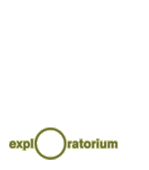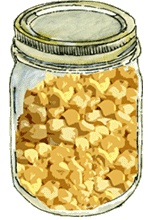
|
|
More Knowledge, Less Diversity
Until about a hundred years ago, farmers and gardeners had
no understanding of genetics or patterns of inheritance. They
knew only that plants, like animals, can pass on traits to
their offspring through reproduction. Given that perspective,
it’s pretty impressive that earlier growers managed to
develop such a mind-boggling diversity of plant varieties.
In the twentieth century, as theories of inheritance unfolded
and the structure and function of DNA became clear, plant breeders
devised new ways to bring out desired traits in a plant. These
often involve
hybridization
, a complicated process
of inbreeding and cross breeding plants that results in a particularly
strong expression of some of its genes. Other, more modern
methods include
transgenics
, the splicing of desirable
genes from one species into another. (For more on hybridization
and transgenics, see
Three
Ways to Make a New Plant
.)
|

|
|

|
|
|

|
|
|
Saving
Seeds, Saving Culture
Learn about
the Native Seeds/SEARCH seedbank, which preserves plant
varieties developed by Native American farmers in the Southwestern
United States.
|
Because there are specific methods for developing the seeds for
hybrid plants, they are usually produced on a large scale by seed
companies rather than by individual farmers or gardeners. Many
growers today, from farmers to backyard gardeners, buy these seeds
because they have lots of beneficial qualities: They may be able
to withstand difficult weather conditions, have bigger fruits,
or be easier to harvest. The downside is that where these commercially
developed varieties are planted—whether it be in your urban
window box or on a rural farm—the smaller-scale, homegrown
ones aren’t. And where homegrown seeds aren’t being
planted, varieties are being lost. This goes for Granny’s
heirloom tomatoes, too.
As a result, most of what we plant, grow, and eat comes from just
a few highly developed varieties of each of our food plants. At
the garden store, you may find ten or twelve less-common carrots
or onions to plant, but this doesn’t begin to match the diversity
that actually exists.
Keeping the Story Going
“So?” you asked many paragraphs back. “If we
lose a tomato or two, what’s the big deal?” Genetic
diversity is a sort of insurance policy for the continuation of
a species, and it’s what drives change and adaptation in
the living world. In the case of garden and crop plants, diversity
insures that we’ll be able to continue eating the plants
we now eat.
A field of corn, tomatoes, or any crop grown from hybrid seed
is a field of very, very close relatives—much more closely
related than a field of tomatoes grown from Great Grandmother’s
seed. Each individual in the field of hybrids will be susceptible
to the same ills, and therefore they could all be wiped out by
one pest, disease, or weather incident. In 1979 and 1980, for example,
the entire rice crop in India was decimated by a blight, a crisis
in a country where rice is the staple. The rice crop in the region
was restored when, after searching the continent, agronomists (soil
and plant scientists who work on crops) found an obscure rice variety
that was resistant to the disease. If farmers had not saved and
grown that particular variety, it may have been much more difficult
for Indian farmers to combat the blight, and the people they feed
would have had to turn to other crops for sustenance. Similar situations
have arisen involving many crop plants, some with less happy endings.
In the case of the Irish potato famine, not only did blight wipe
out most of the potatoes; the lack of food wiped out much of the
population as well.
If you’re a backyard gardener growing and saving seeds from
Great Grandma’s tomatoes, you’re helping to maintain
the same diversity that rescued the rice crop. Saving seed has
other, more personal benefits, too. By raising generations of plants,
you’ll see for yourself how traits are passed on, and how
you can select for the qualities you want to bring out. Over time,
you can even “customize” your plants to suit your backyard
conditions and your tastes. This is what growers before you have
done for centuries, and everything in your garden is a genetic
record of their choices. By saving and planting seed, you add your
own chapter to the story.
|





